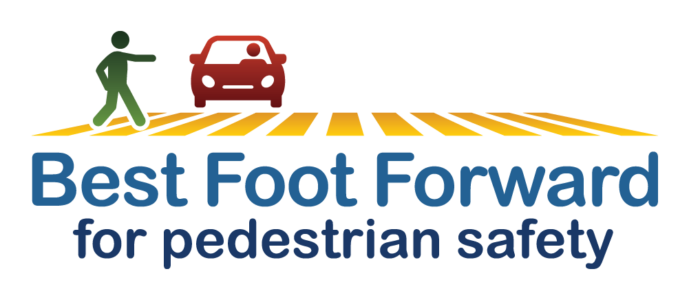From July 29 through August 8, 2025, the Best Foot Forward (BFF) coalition partnered with law enforcement…

The Evolution of Crossing Guard Services: A Brief History
Crossing guards have been a critical component of pedestrian safety for over a century. From early beginnings to modern-day efforts, crossing guard services have evolved to meet the changing needs of communities and the challenges posed by a growing and ever-changing world.
The first recorded use of crossing guards can be traced back to the early 20th century. At the time, cities were growing rapidly, and with that growth came the need for improved safety. Believe it or not, some of the first roles of crossing guards were to signal automobiles and other forms of mobility of the day that a train was incoming. In response to the growing number of pedestrian fatalities from drivers, the first known U.S. program was established in New York City. The crossing guard program in New York City was initially run by the police department and consisted of retired police officers and was considered a success.
Above Image via the town of Greece, NY.
Crossing guard Henry Lewerenz. Mr. Lewerenz is shown stationed at the Barnard railroad crossing around 1920 as a Buffalo, Rochester & Pittsburgh coal train passes. Prior to the installation of automated lights and gates, guards were stationed at railroad crossings throughout Monroe County. The Barnard railroad crossing was located on Dewey Avenue near the Holy Sepulchre Cemetery.
As cities continued to grow and traffic increased, the need for crossing guard services also increased. By the 1950s, crossing guard programs had become a common sight in communities across the United States. The guards were typically recruited from the local community and were responsible for directing traffic and helping children and other pedestrians safely cross busy streets, particularly near schools.
Image via the New York Public Library
A crossing guard in 1940s Phoenix, Arizona, controls a manual sign in the middle of an intersection while high school students cross.
Over time, crossing guard services expanded to meet the needs of communities, becoming an integral part of many cities and urban areas worldwide. From school programs to community outreach efforts, crossing guard services have sought to educate on the importance of pedestrian safety and their role in reducing accidents and fatalities.
Seminole County Crossing Guards are vital to teaching bike and pedestrian safety around the county, hosting bike rodeos, in-class education, and more! They also fit and provide helmets to students and annual events like Jordan Sporting Goods Holiday Store. That’s just a portion of what crossing guards do outside of their more well-known roadside duties.
With the advent of new technologies and materials, crossing guard services have improved their visibility and effectiveness. From reflective vests to improved signage and traffic control devices, these advancements have helped to enhance the safety of crossing guard services for individuals navigating busy roads and intersections.
Despite the importance of crossing guard services, they can only operate effectively with the community’s support. In many areas, communities have come together to support their local crossing guard services, providing resources and support to help ensure the safety of individuals as they navigate busy roads and intersections. Through their tireless efforts, crossing guards help to ensure that individuals can safely and confidently navigate the streets and intersections of their communities. Our Bike/Walk Central Florida team applauds them for making Central Florida more walkable, bikeable, and rollable. We encourage you to do the same anytime you cross paths with one of these local heroes!







This Post Has 0 Comments